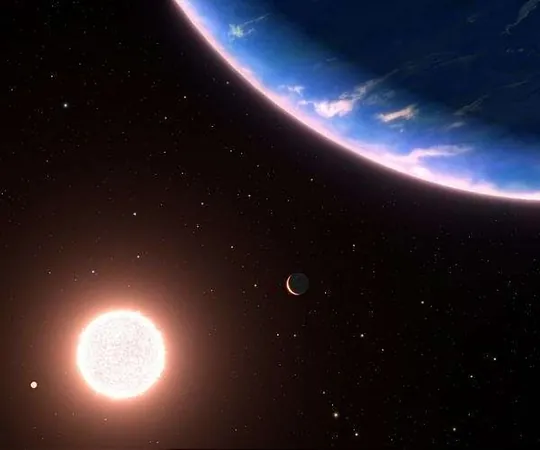
UChicago Scientists Discover Game-Changer for Spotting Distant Planet Atmospheres!
2024-10-10
Author: Ming
UChicago Scientists Discover Game-Changer for Spotting Distant Planet Atmospheres!
In a groundbreaking study, researchers at the University of Chicago have unveiled a revolutionary technique for detecting atmospheres on exoplanets, significantly advancing our quest to find life beyond Earth. This innovative approach, led by Qiao Xue, a PhD student, promises to transform the way scientists determine the habitability of distant worlds, particularly as the astronomical community prepares to delve into extensive data from the James Webb Space Telescope (JWST).
Identifying atmospheres on exoplanets is crucial since an atmosphere can indicate a planet's ability to support life. Although also many Earth-like exoplanets have been discovered, scientists have yet to confirm the presence of atmospheres on any of them. Until now, existing methods often required precise measurements that were difficult to obtain, especially with the limitations of previous telescopic observations.
Xue, along with a team that includes prominent figures like Professor Jacob Bean, has demonstrated how this new method improves upon earlier techniques by analyzing temperature discrepancies as planets orbit their stars. By comparing a planet's hottest side with its theoretical maximum temperature, the analysis determines whether an atmosphere exists to redistribute heat. If the observed temperature is lower than expected, it strongly suggests the presence of an atmosphere.
“Thanks to the advanced capabilities of the JWST, we can now obtain clearer infrared readings, enhancing our observations of distant planets,” Xue explained. She recently applied this technique to GJ1132 b, a rocky exoplanet, and concluded that it does not have an atmosphere, subsequently ruling it out as a candidate for hosting life. This method's reliability marks a significant improvement over previous approaches, which were often confounded by star activity and cloud cover.
“This study is not just a technical achievement,” Xue added excitedly. “It represents a tangible step toward understanding rocky planets, which are incredibly exciting because they offer immense potential for life.”
As the astronomical community anticipates the influx of data from JWST, researchers hope to uncover trends that will further unravel the mysteries of atmosphere formation and habitability. Collaborators on the study include experts from Harvard and the Smithsonian Center for Astrophysics, Cornell University, and Peking University, reflecting a strong international effort to expand our knowledge of the cosmos.
As we stand at the brink of new discoveries, the future of exoplanet exploration looks promising. Will we finally find a second Earth? Stay tuned as this incredible journey unfolds!



 Brasil (PT)
Brasil (PT)
 Canada (EN)
Canada (EN)
 Chile (ES)
Chile (ES)
 España (ES)
España (ES)
 France (FR)
France (FR)
 Hong Kong (EN)
Hong Kong (EN)
 Italia (IT)
Italia (IT)
 日本 (JA)
日本 (JA)
 Magyarország (HU)
Magyarország (HU)
 Norge (NO)
Norge (NO)
 Polska (PL)
Polska (PL)
 Schweiz (DE)
Schweiz (DE)
 Singapore (EN)
Singapore (EN)
 Sverige (SV)
Sverige (SV)
 Suomi (FI)
Suomi (FI)
 Türkiye (TR)
Türkiye (TR)